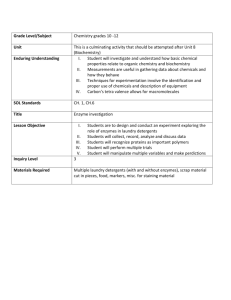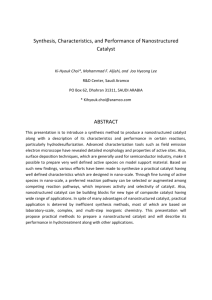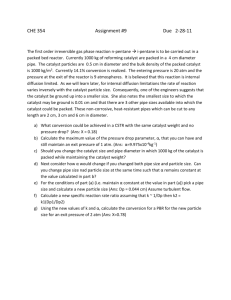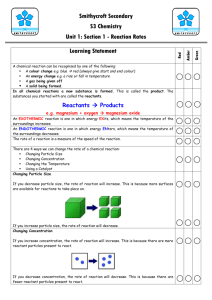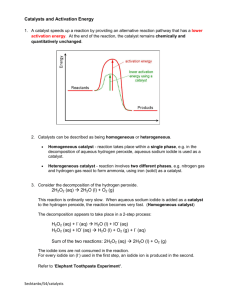Rates of Reaction
advertisement
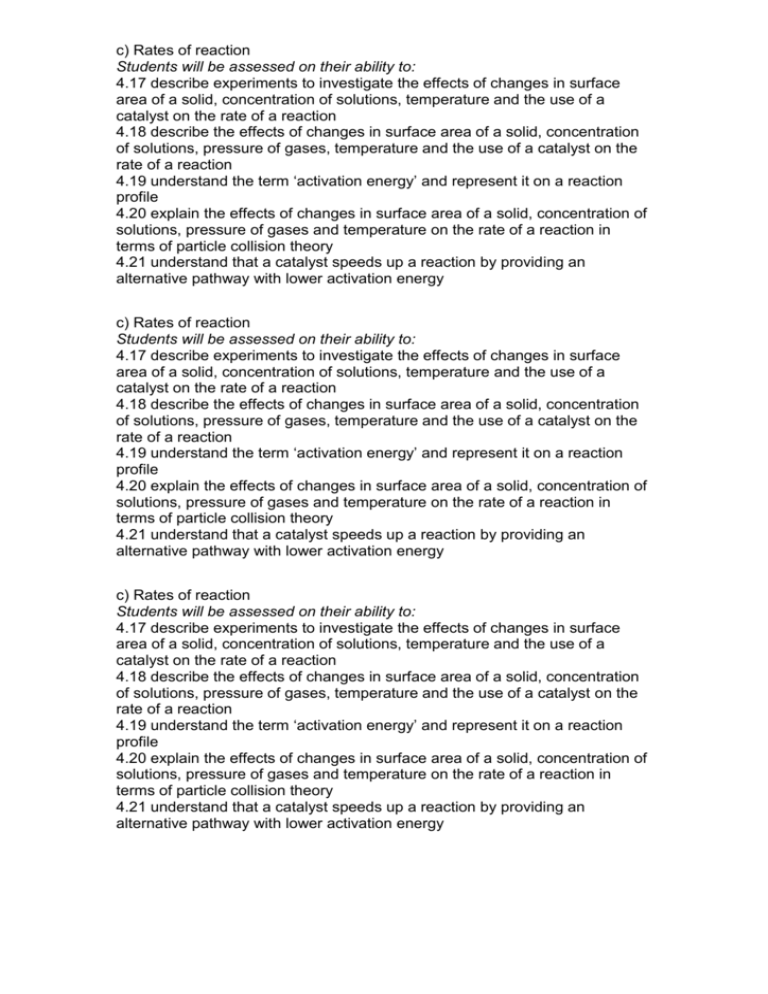
c) Rates of reaction Students will be assessed on their ability to: 4.17 describe experiments to investigate the effects of changes in surface area of a solid, concentration of solutions, temperature and the use of a catalyst on the rate of a reaction 4.18 describe the effects of changes in surface area of a solid, concentration of solutions, pressure of gases, temperature and the use of a catalyst on the rate of a reaction 4.19 understand the term ‘activation energy’ and represent it on a reaction profile 4.20 explain the effects of changes in surface area of a solid, concentration of solutions, pressure of gases and temperature on the rate of a reaction in terms of particle collision theory 4.21 understand that a catalyst speeds up a reaction by providing an alternative pathway with lower activation energy c) Rates of reaction Students will be assessed on their ability to: 4.17 describe experiments to investigate the effects of changes in surface area of a solid, concentration of solutions, temperature and the use of a catalyst on the rate of a reaction 4.18 describe the effects of changes in surface area of a solid, concentration of solutions, pressure of gases, temperature and the use of a catalyst on the rate of a reaction 4.19 understand the term ‘activation energy’ and represent it on a reaction profile 4.20 explain the effects of changes in surface area of a solid, concentration of solutions, pressure of gases and temperature on the rate of a reaction in terms of particle collision theory 4.21 understand that a catalyst speeds up a reaction by providing an alternative pathway with lower activation energy c) Rates of reaction Students will be assessed on their ability to: 4.17 describe experiments to investigate the effects of changes in surface area of a solid, concentration of solutions, temperature and the use of a catalyst on the rate of a reaction 4.18 describe the effects of changes in surface area of a solid, concentration of solutions, pressure of gases, temperature and the use of a catalyst on the rate of a reaction 4.19 understand the term ‘activation energy’ and represent it on a reaction profile 4.20 explain the effects of changes in surface area of a solid, concentration of solutions, pressure of gases and temperature on the rate of a reaction in terms of particle collision theory 4.21 understand that a catalyst speeds up a reaction by providing an alternative pathway with lower activation energy





